Lifestyle
Film Under the Stars Returns to Ljubljana Castle, 6 July to 8 Aug (Trailers)
If you’ve been missing that communal movie-going experience, and are still wary of entering a theatre, then rejoice at the return of Film Under the Stars (Film pod zvezdami), the annual celebration of al fresco cinema that takes place at 21:30 in the courtyard of Ljubljana Castle with a programme of chosen by Kinodvor, arguably the best cinema in the country, only rivalled by Kinoteka, the revival house one street over. It thus presents the opportunity to see the best and biggest names of of the last 12 months of art house cinema in beautiful surroundings, at low cost, and in the company of others
A PDF of the schedule can be found at the end of this post, but before then let’s take a look at the trailers for the first few days and then selected others, as there’s really too many post here. Note that all film are screened in their original language with English subtitles, while English-language films are screened with Slovenian subtitles only.
Maiden - Thursday, 16. 07. 2020 / 21:30
Parasite - Friday, 17. 07. 2020 / 21:30
Once Upon a Time … in Hollywood - Saturday, 18. 07. 2020 / 21:30
Pain and Glory – Sunday, 19. 07. 2020 / 21:30
Stories From The Chestnut Woods – Monday 20. 07. 2020 / 21:30
A Rainy Day in New York – Tuesday 21. 07 . 2020 / 21:30
Beyond that you can enjoy: Pinocchio, Portrait de la jeune fille en feu (Portrait of a Lady on Fire), Marianne & Leonard – Words Of Love, Knives Out, Judy, 1917, Medena zemja (Honeyland), Lara, Ema, La vérité (The Truth), Joker, Where'd You Go Bernadette , J'accuse (An Officer and a Spy), Little Women, The Lighthouse, A Hidden Life, Les Misérables, and Hope Gap.
Tickets are 5 euros for regular screenings, 6 for premieres and “special screenings”. You can buy tickets at the Castle (including at the funicular), Kinodvor, Petrol gas stations and Kompas tourist offices
In case of bad weather the screenings will be cancelled, as announced at kindovor.org and ljubljanskigrad.si by 19:00 on the day of the scheduled screening, with rescheduled screenings taking place the following evening at 21:30 at Kinodvor.
Tickets to the cancelled screening may be exchanged for:
- tickets to the film’s additional screening: available at the Kinodvor box office until seating capacities are reached (the number of seats at Kinodvor is considerably lower than at the castle courtyard);
- tickets to any other screening of Film Under the Stars: available at the box offices of the Ljubljana Castle Entrance Pavilion and the Lower Funicular Station (tickets to the cancelled Avant Premiere or Special Screening can only be exchanged for tickets to another Avant Premiere or Special Screening);
- cash refund: to be collected from the place of purchase by 24 August 2020. After this date tickets cannot be refunded. Tickets purchased through online sales can be exchanged for the purchase price at the cash desk of the Entrance Pavilion at the Ljubljana Castle and at the lower funicular railway station.
The PDF of the full programme is here, and if you plan on going then please follow the instructions and recommendations below to help protect the wellbeing of all visitors.
- Only go to the Film Under the Stars if you are healthy and show no symptoms of illness.
- Enter the event venue individually and disinfect your hands when entering.
- Do not touch your eyes, nose and mouth and follow the rules of hand hygiene, coughing and sneezing.
- Always keep a safe distance from each other (at least 1.5 m).
- Before entering the enclosed spaces of Ljubljana Castle, put on a mask.
- The number of visitors is limited and the seats are set up so as to keep a distance of 1.5 m between spectators, which is why you do not need to wear a protective mask during the screening.
- There is a seating plan. Observe it and do not move the chairs.
- Follow the instructions given by the ticketing agents.
- Turn off your mobile phone and other electronic devices that emit sound and/or light before the screening starts.
- Contactless (i.e. card) payment is recommended.
Animals are welcome in the Film Under the Stars as long as they do not disturb the screening
On July 13 1920, Italian black-shirts burnt down the National Hall of Trieste, a symbol of the Slovenian presence in the multi-ethnic city of Trst/Trieste, then went on to riot and destroy about twenty other Slovenian businesses and organisations in the city. Benito Mussolini, who became Il Duce two years later, praised the act as a "masterpiece of the Triestine fascism".
Now, a century later, Slovenian president Borut Pahor and Italian President Sergio Mattarella have met to sign a Letter of Intent to return the building to the Slovenian minority, recognizing an existence that has been so violently denied under Fascist rule and beyond.
As part of the ceremony, the highest state decorations of Slovenia and Italy were awarded to Boris Pahor, the Slovenian writer and humanist from Trieste, born in 1913 and a survivor of both life under Italian Fascism and that in a Nazi concentration camp.
Presidents Pahor and Mattarella then met with representatives of the Slovene national community in Italy and the Italian national community in Slovenia.
After that the Slovenian and Italian presidents visited the exhibition on the occasion of the 100th anniversary of the burning of the National Hall inside the building and signed their names into the Hall’s Golden Book.
STA, 13 July 2020 - Final-year secondary school students appear to have made it through two months of remote learning ahead of the matura exam without major damage, as the national school-leaving exam was successfully passed by around 94%, only one percentage point less than in 2019.
The matura exam, a crucial test determining future study possibilities, was a major challenge for the education system, since schools were closed in mid-March due to coronavirus to open for some pupils, including final graders, only in mid-May.
Two months of remote learning however appear to have had no major impact on students' performance in the exam, which began on 30 May. Of the 5,560 grammar school students who were allowed to take it after finishing their final year 93.92% passed the exam, which compares to 95.18% in 2019.
The number of those to score 30 points or more out of 34 available even exceeded last-year's figure from the spring matura term, the number being 280 compared to 236 last year. All points were collected by 11 students, while it was eight last year.
Meanwhile, the national school-leaving exam for vocational students was passed by 92.59% in the first of what are two terms, which compares to 93.08% last year. The number of those scoring 30 points or more increased from 345 to 388, while the number of those with the maximum score was up from 106 to 112.
STA, 11 July 2020 - Cavers exploring the karst caves in the Kočevski Rog woods in south-eastern Slovenia have found what appears to be another mass grave in what is an area containing the remains of several thousand people killed in summary executions after the end of World War II.
The chair of the government commission for mass graves Jože Dežman wrote on Saturday that the chasm contains the remains of at least 35 people, while dozens more are expected to be exhumed.
All but possibly one of the remains examined so far appear to be male remains, Dežman added, explaining the operation only started on Friday.
The karst chasms in Kočevski Rog contain the remains of thousands of bodies, especially those of members of the nearby Novo Mesto group of the Domobranci anti-communist home-guard who did not manage to escape abroad. They were hunted for months after the war and most were murdered, Dežman said.
Related: Mass Concealed Graves in Slovenia, an Interactive Map
He spoke of several more locations in the area, including the Rugarski klanci site that contains the remains of what appear to have been 22 members of the armed forces of the Ustasha-governed Croatian NDH state.
The latest research in Kočevski Rog meanwhile confirmed that the Macesnova Gorica chasm "is probably the biggest Slovenian slaughter site and mass grave". The commission hopes the exhumation of the victims will be able to begin next year.
Related: Post-War Massacres in Slovenia
As for the Kren site, which had been perceived as the largest mass grave of the Domobranci, it seems that it was mostly members of the Serb and Montenegrin Chetnik royalist and nationalist units who ended up there.
Meanwhile, Dežman added that it was today that the commemoration was held for the Muslims killed in Srebrenica in 1995. "If we condemn the crimes against POWs and civilians in Srebernica then we also condemn the crimes against POWs and civilians being discovered in Kočevski Rog and elsewhere around Slovenia," he wrote.
Celje is the third largest town in the country and home to the most influential late medieval noble dynasty on the territory that eventually became known as Slovenia, the Counts of Celje.
Lying at a great location in the lower part of Savinja River Valley, Celje has a long history going back to the Hallstattt era. Celje’s original and oldest name that we know of was Keleia which was changed to Celeia in Roman times. The city continued its relative importance throughout history, and was one of the first to get a railway connection in 1846.
After the Second World War, the town on the riverbanks of the Savinja turned into a lively industrial and commercial centre, and today it has all the characteristics of a regional, administrative, business, cultural, school, health and tourist centre.
Ulica XVI. Divizije:
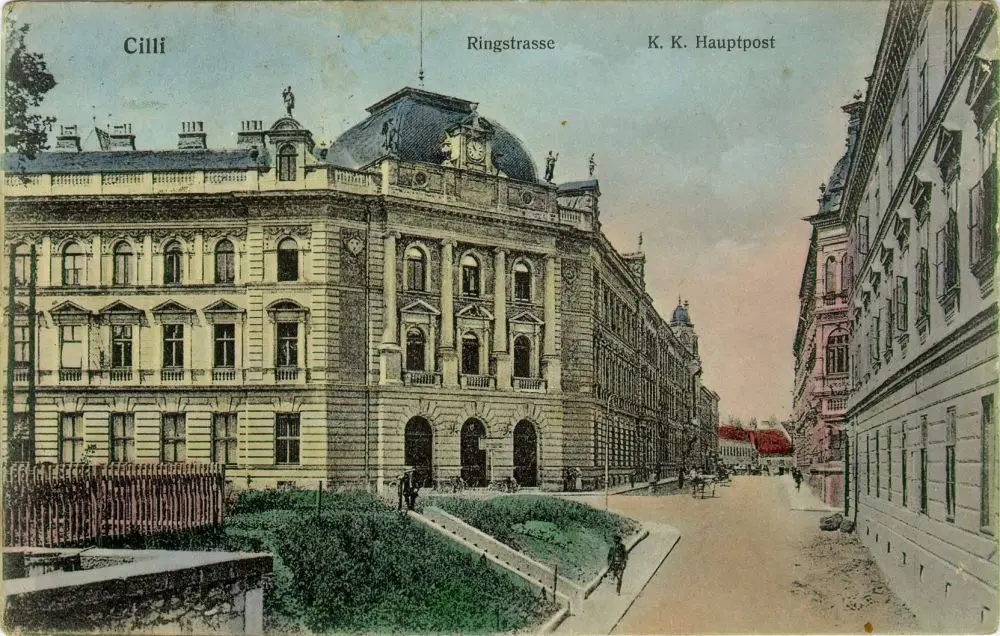
1909
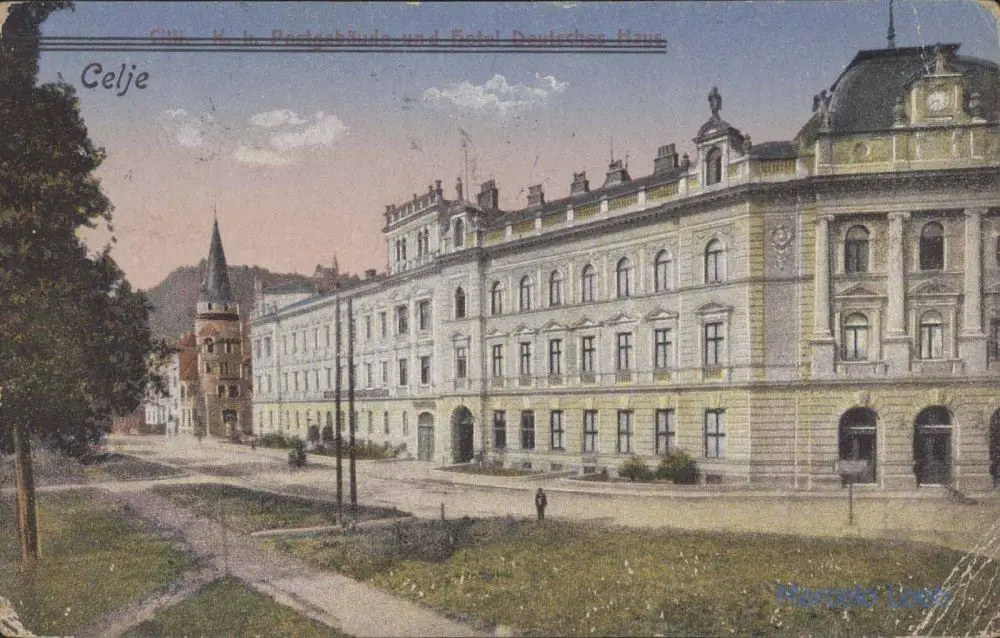
1918
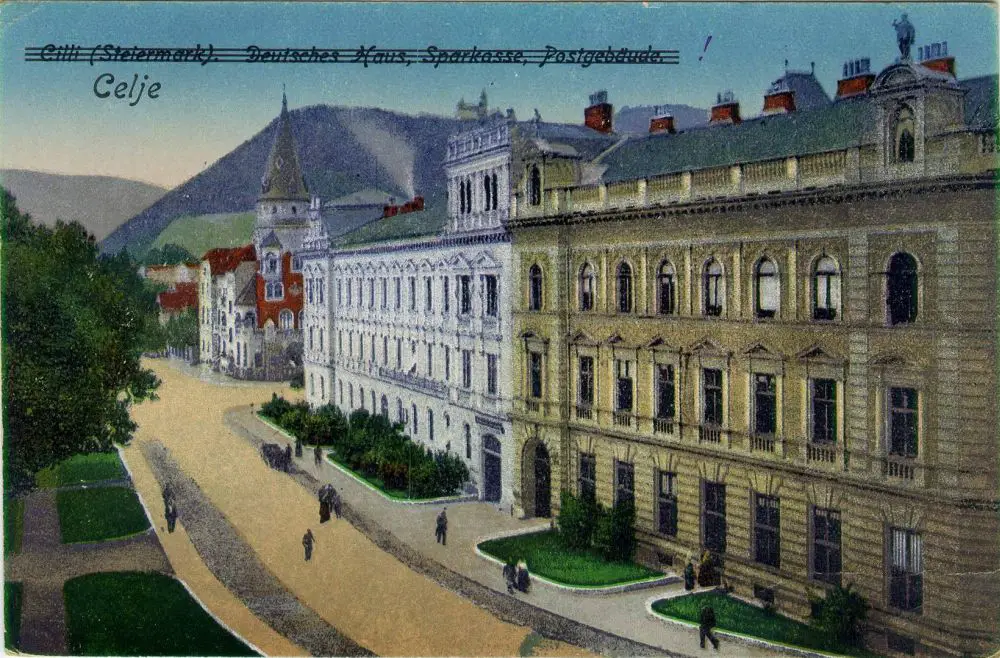
1927
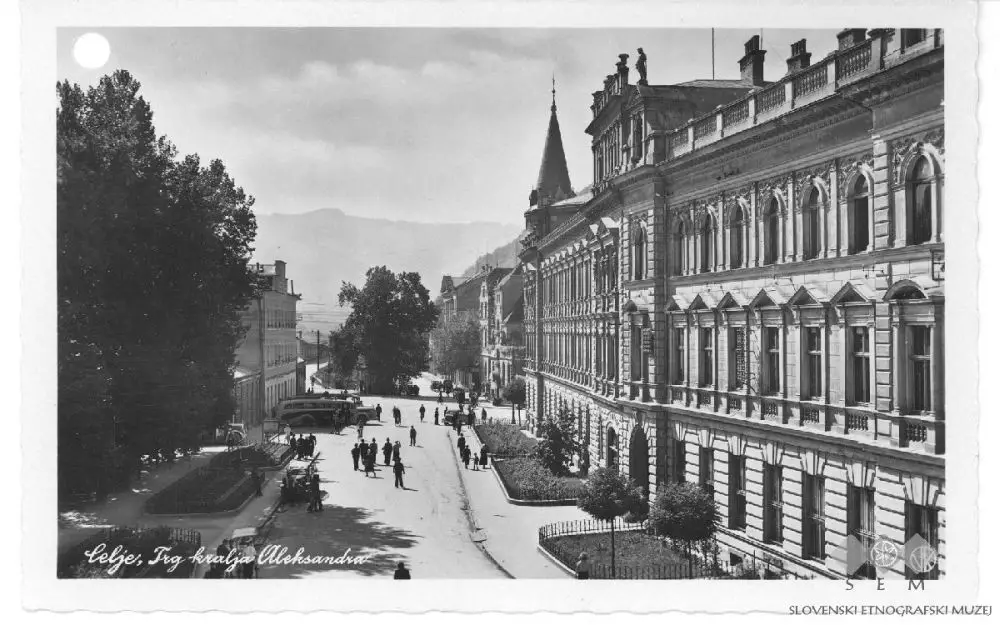
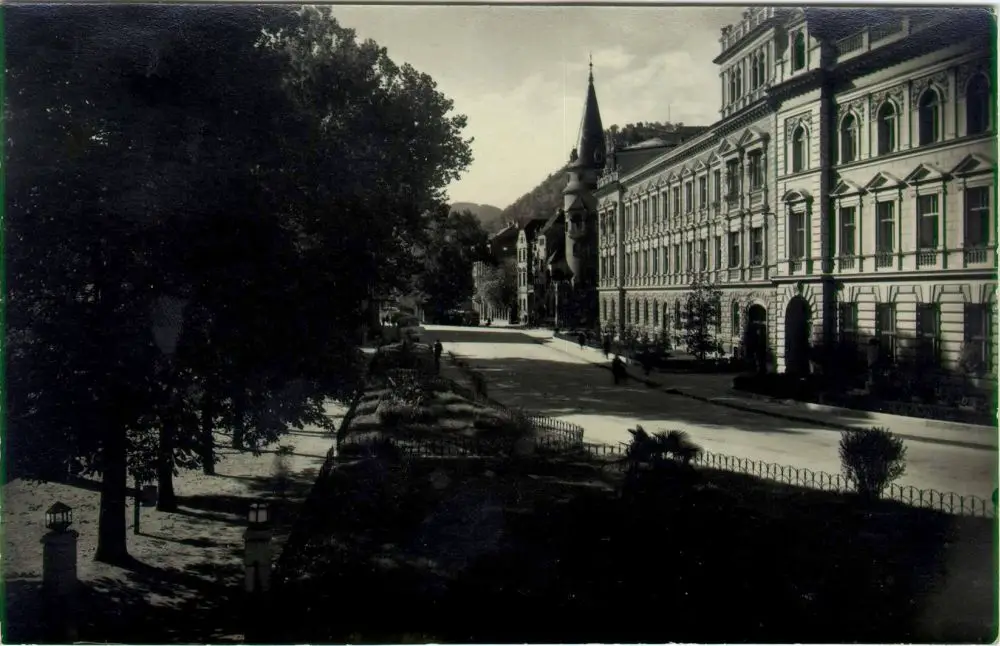
1956
Prešernova ulica:
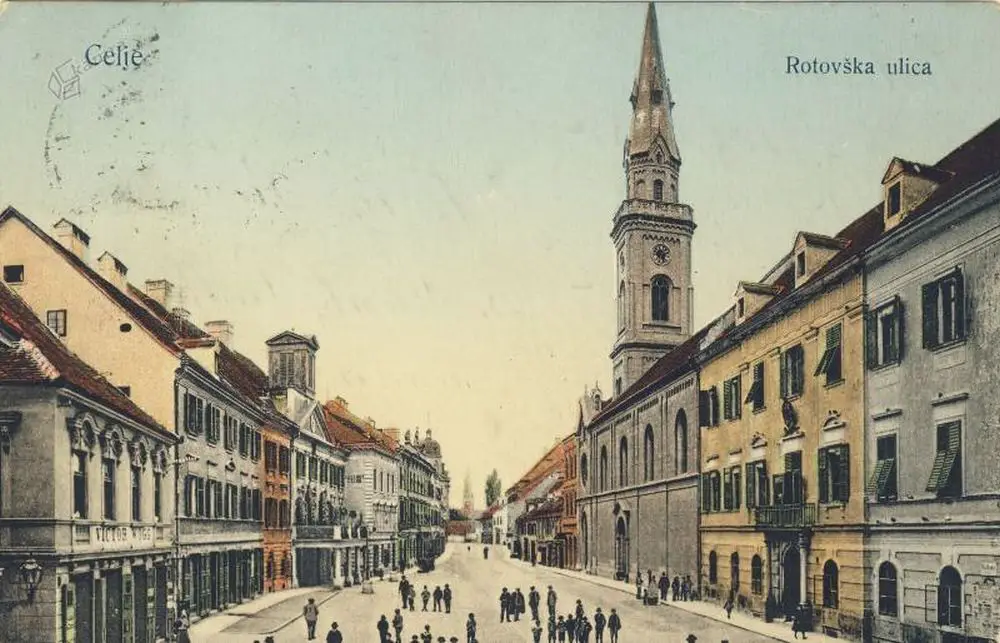
1914
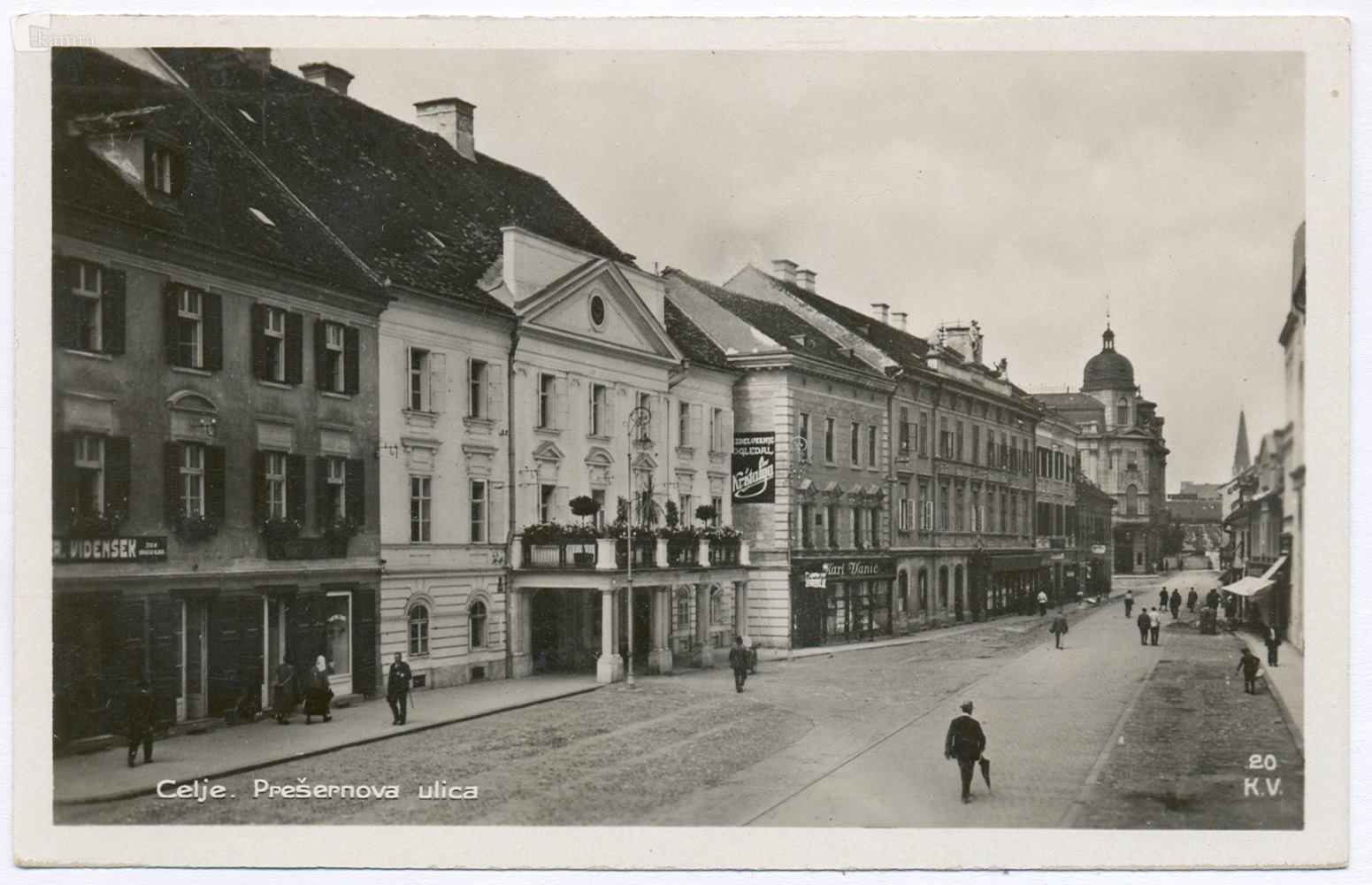
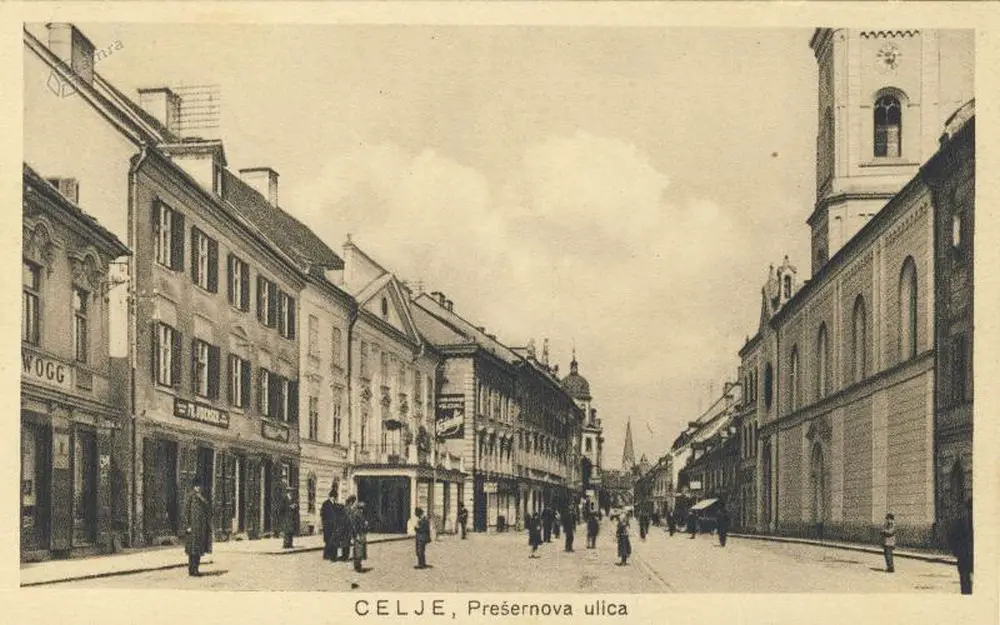
Krekov trg:
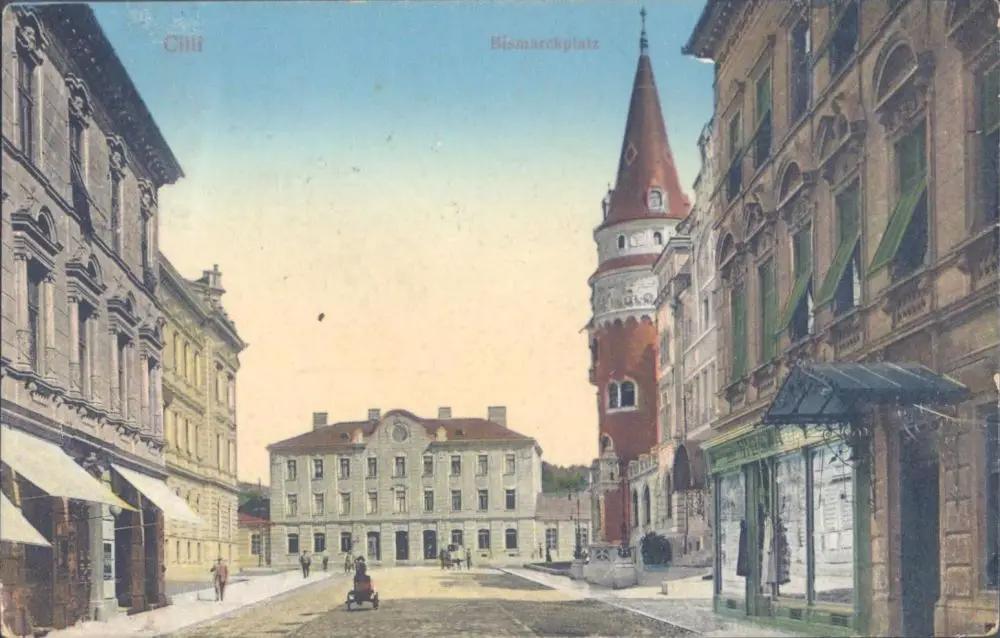

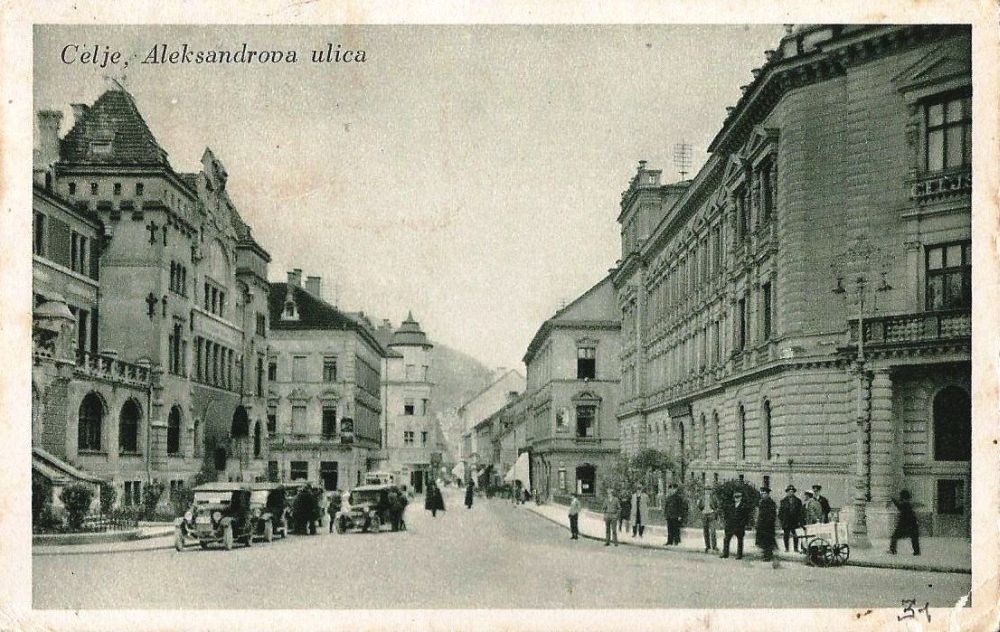
1937
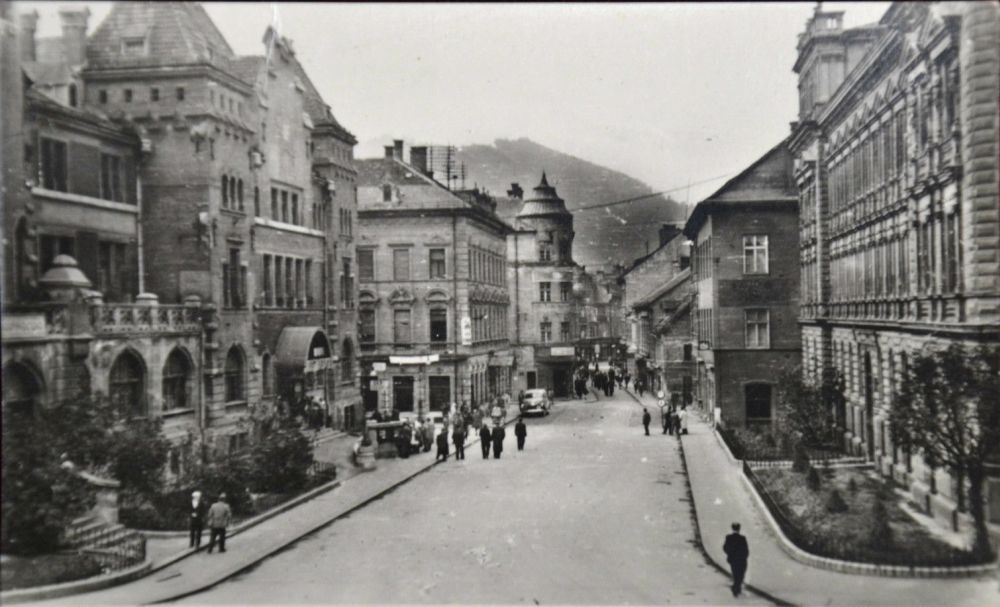
1954
Gledališki trg:
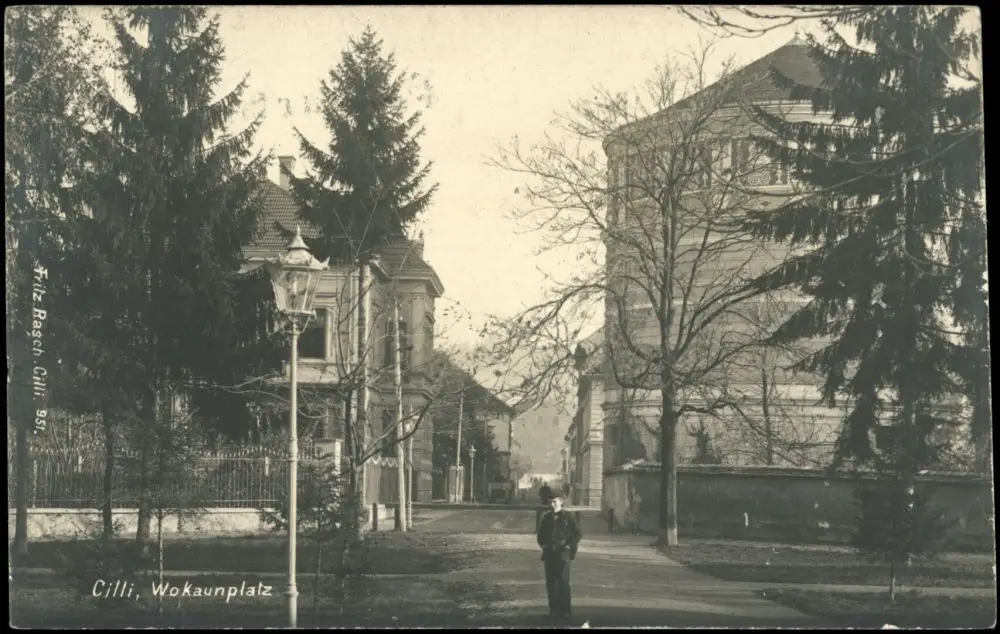
1905
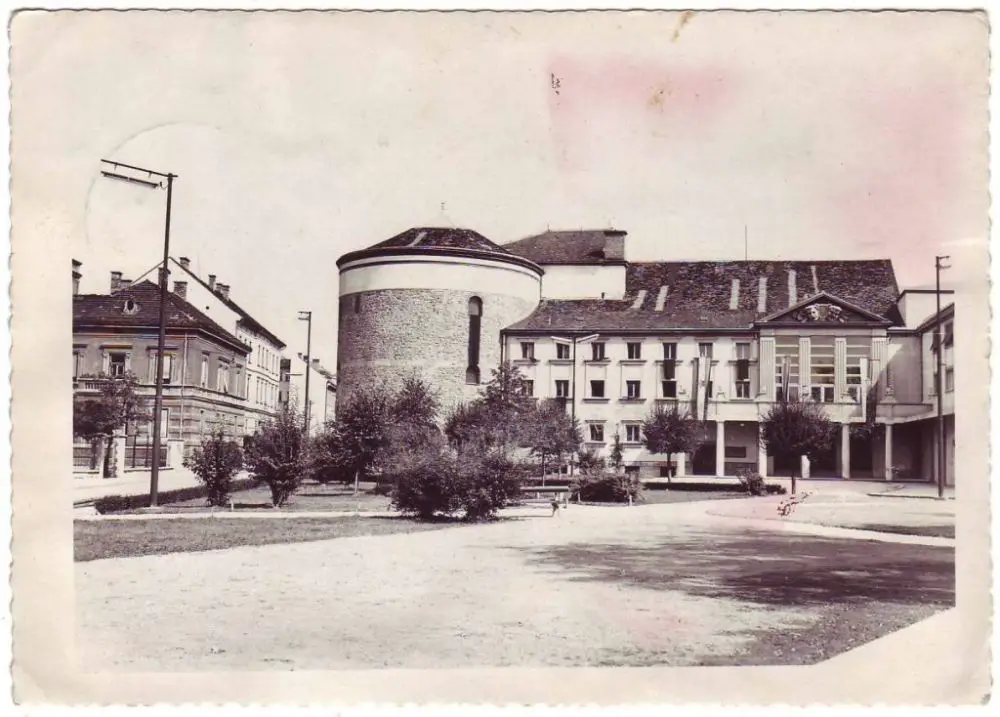
1960
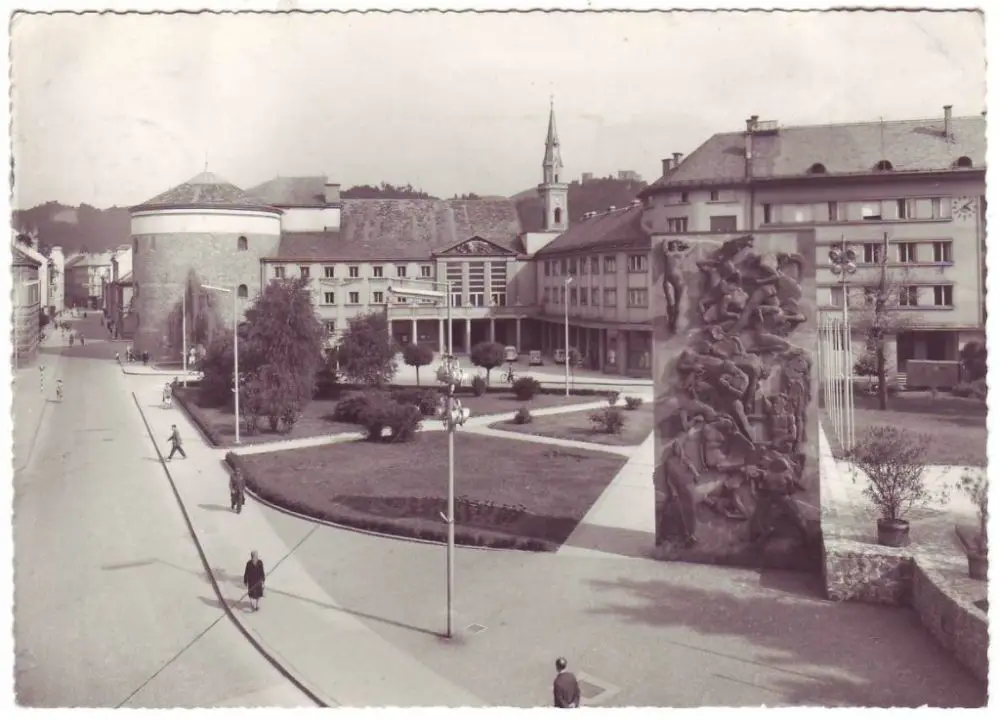
1961
Stara grofija:
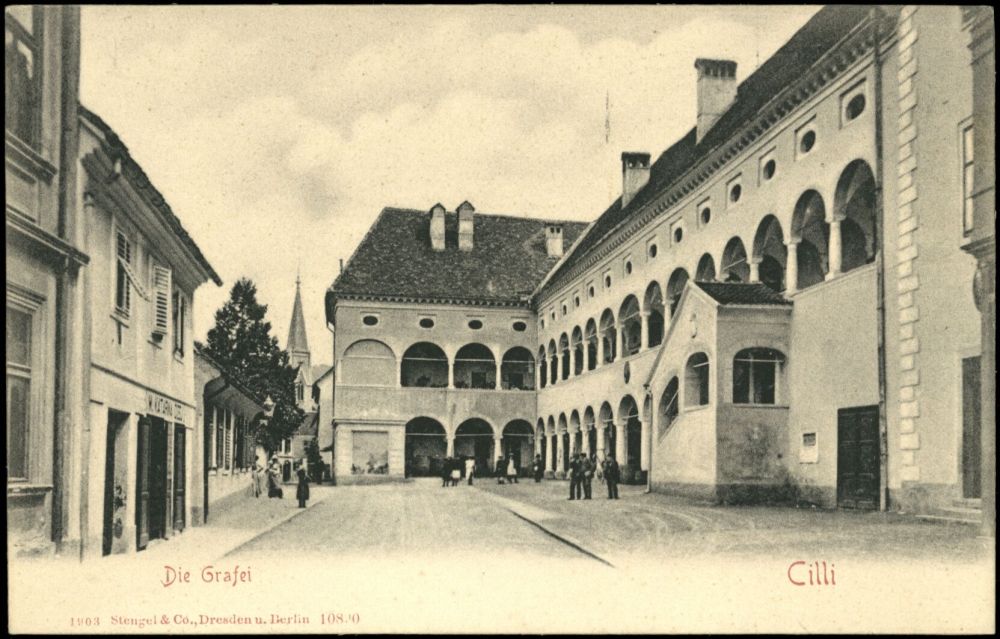
1905
Ljubljanska ulica:
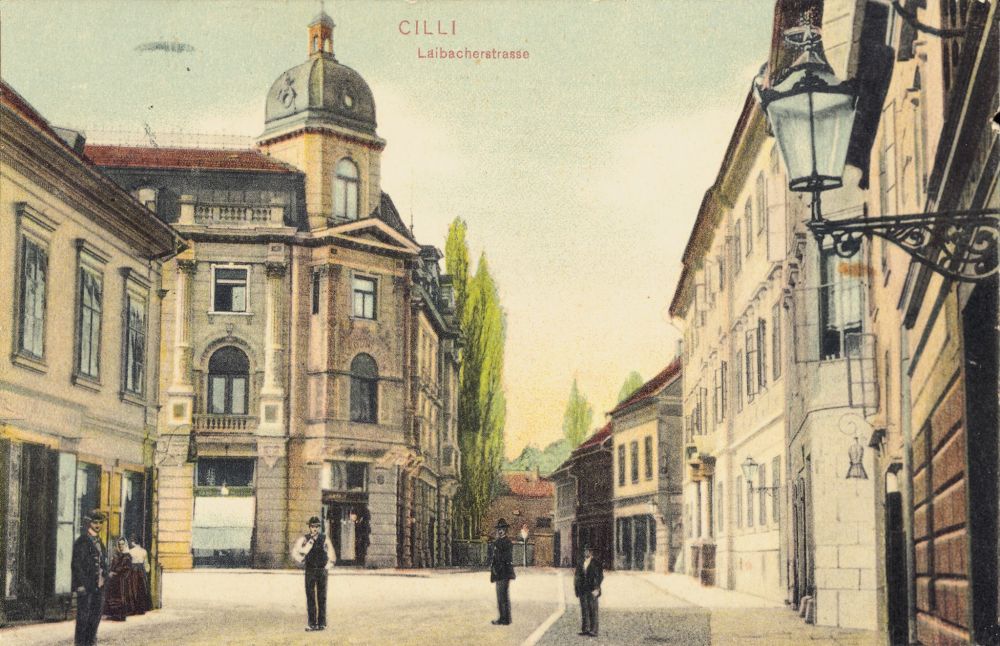
1907
Miscelaneous:
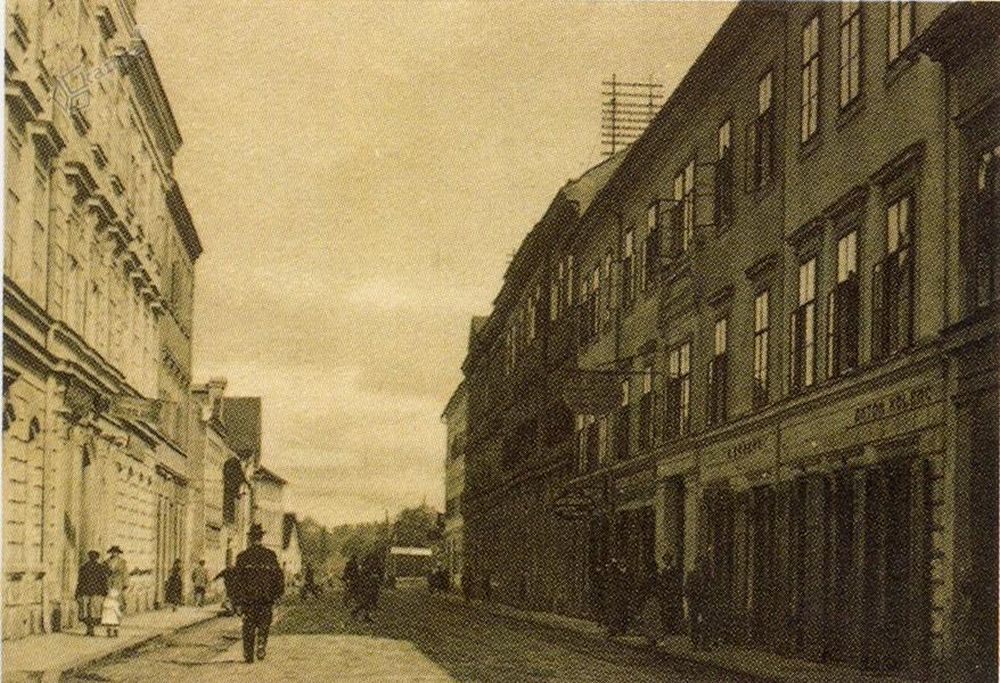
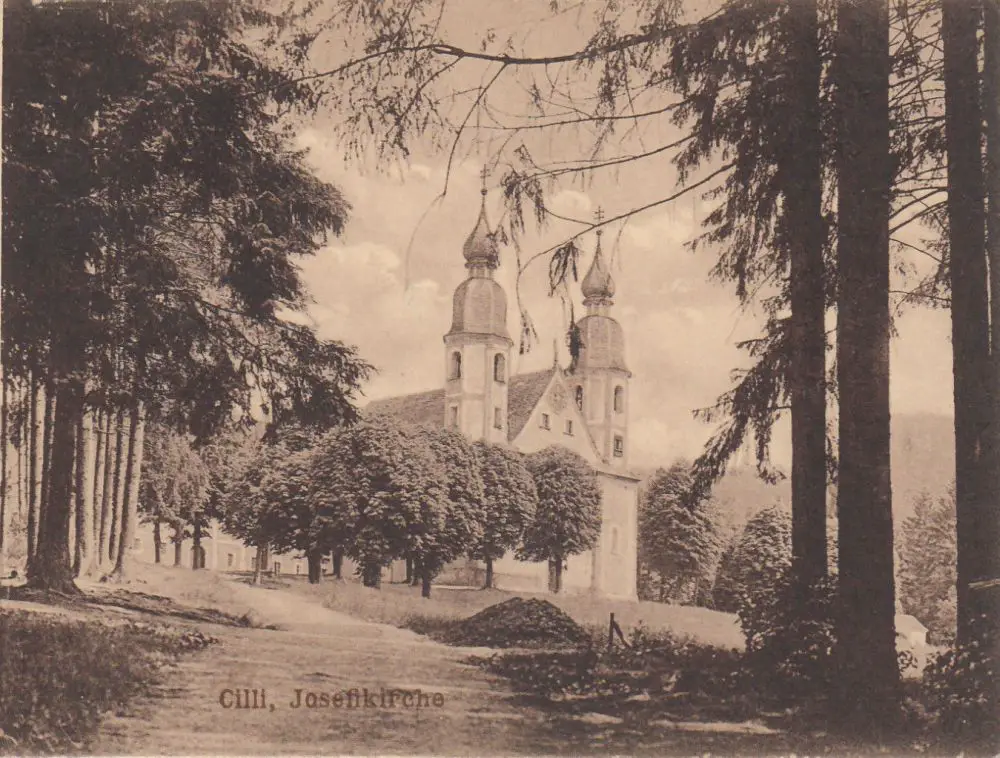
St Joseph's Parish Church, 1916
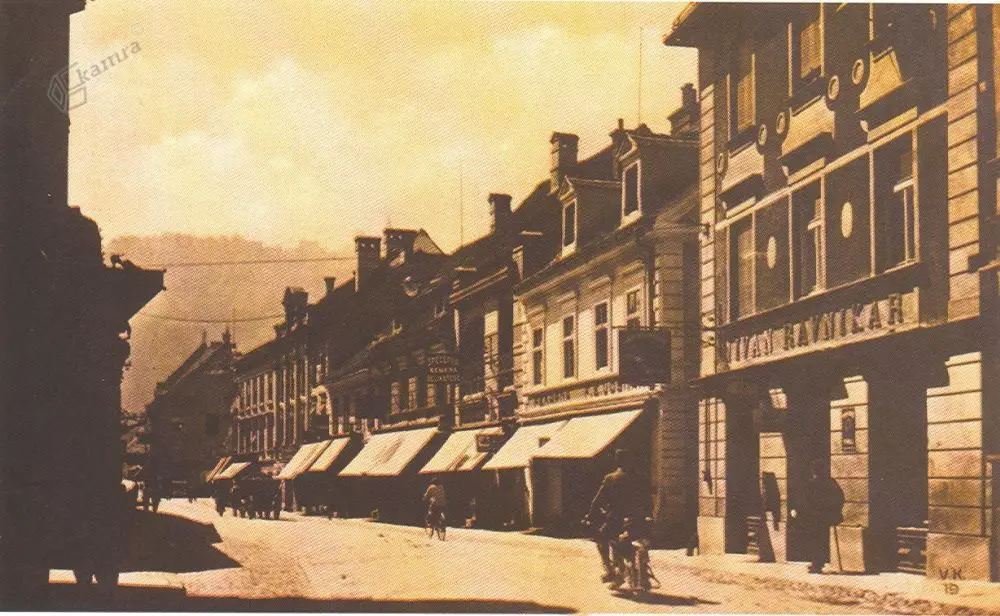
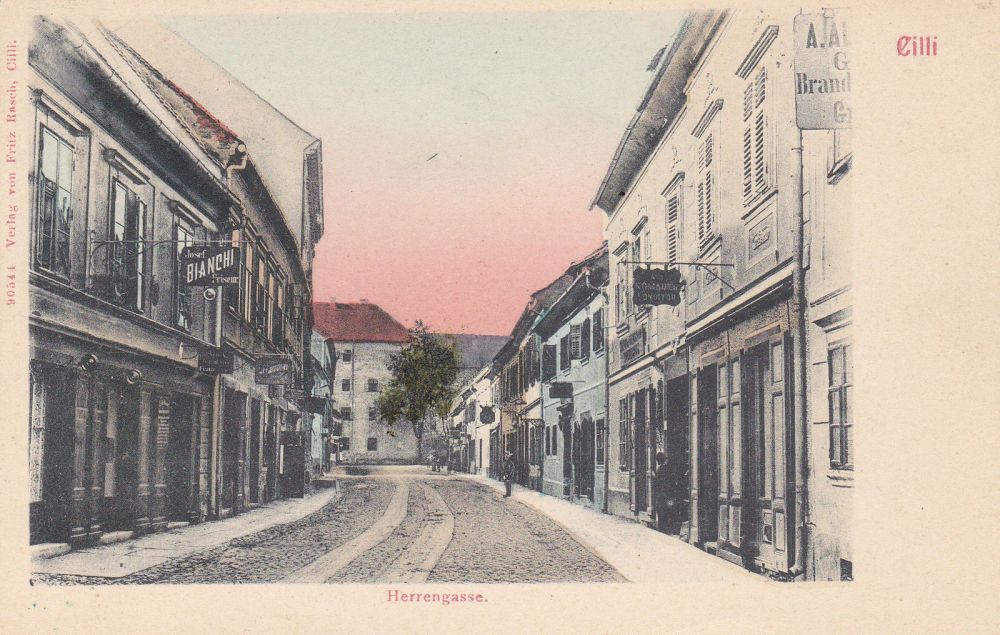
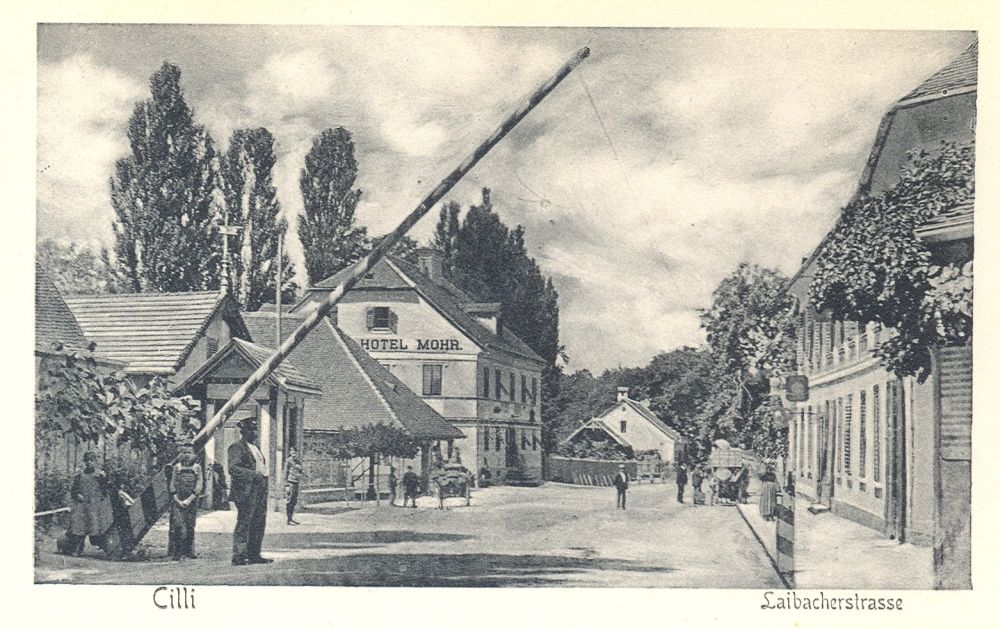
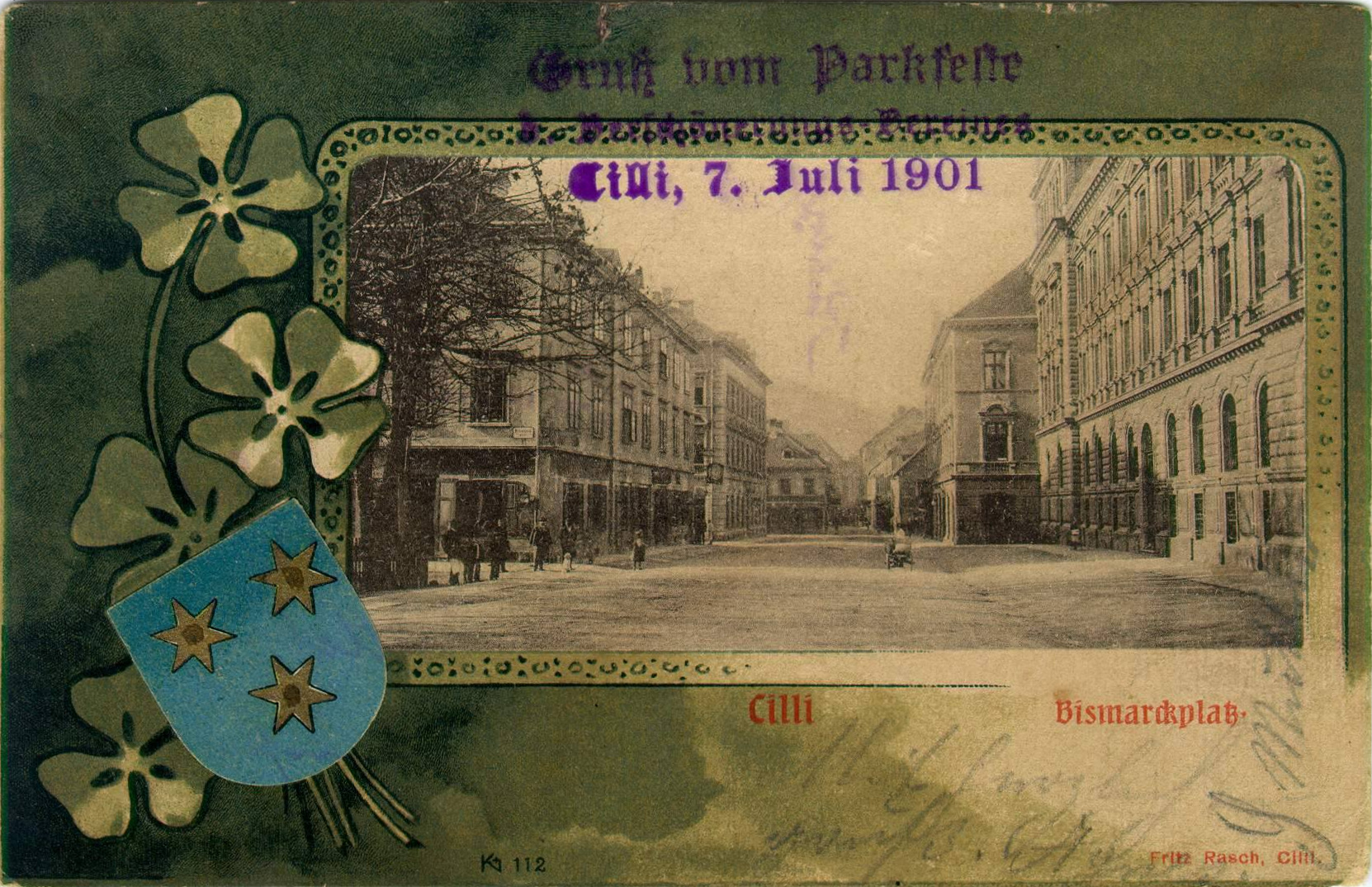
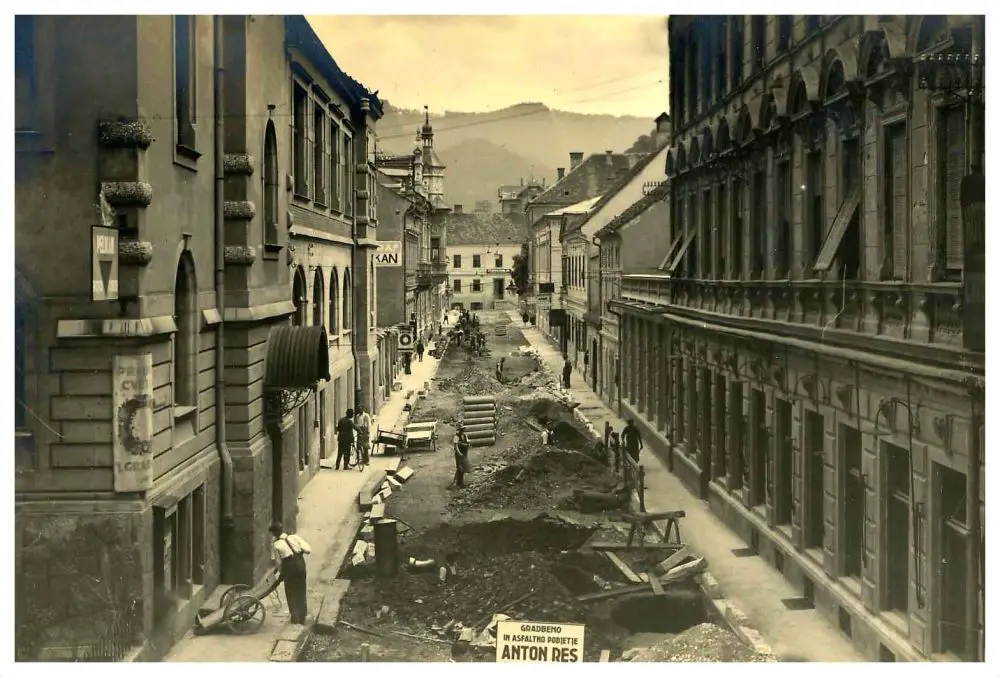
This Sunday locals informed the Krško Firefighting Unit that the wooden statue of America’s First Lady Melania Trump, which had been erected in in Rožno, was on fire.
The wooden sculpture of Trump in a blue dress was raised on July 5th 2019 in a settlement not far from her hometown of Sevnica.
The sculpture was a work of local sculptor and craftsman Aleš Župevc Maxi and commissioned by American artist Brad Downey, who also filmed a documentary about the making of the statue.
The sculpture was met with mixed responses from the public and received a great amount of attention from local and international press.
The Novo Mesto Police have been informed about the incident, and are currently investigating the circumstances of the event.

Earlier this year, a wooden statue of President Donald Trump was also burned, this time entirely, in Moravče, some 30 kilometres east of Ljubljana.
All our stories on Melania Trump and Slovenia can be found here
STA, 7 July 2020 - Since Croatia entered the EU in 2013, Slovenian citizens purchased a total of 9,439 properties in the country, which makes them the most numerous foreign owners of real estate in Croatia in that period.
Unofficial estimates meanwhile put the total number at 110,000, mostly houses or apartments on the Croatian coast, as the bulk of them were bought during the times of the former Yugoslavia.
Citing data from the Croatian Tax Administration, Večernji List says that there should be no concern in Croatia that the Slovenian government would prohibit its citizens from entering Croatia.
Slovenia will not be restricting its citizens in going to the neighbouring country during the Covid-19 pandemic because it will protect the interest of property owners, the Croatian newspaper adds in a report on Tuesday.
When it comes to purchases of real estate in Croatia in the last seven years, Slovenians are followed by Germans (4,969), Austrians (2,867), Italians (1,612), Swedes (1,232) and Hungarians (949).
According to the Croatian Tax Administration, only around 4,400 foreign owners are officially leasing their real estate to tourists and pay tax for that.
Večernji List says that the state body has no complete data on real estate owners in one place, and that precise data will be obtained after a census, which is planned in Croatia next year.
STA, 7 July 2020 - Storms raged across swathes of Slovenia last night as fierce winds uprooted trees and unroofed buildings and heavy rain flooded premises and roads in particular in central and eastern parts of the country.
Firefighters were busy throughout the night, including in Ljubljana, where the railway underpasses in Celovška and Drenikova streets and Šentvid were flooded, leaving three cars stranded in Šentvid.
According to the duty meteorologist at the notification centre of the Civil Protection and Disaster Relief Administration, the Ljubljana Bežigrad weather monitoring station recorded 28.84 millimetre of rain per half an hour and winds gusting at speeds of up to 90 kilometres an hour. The Moste station recorded 23.5 millimetre of rain per half an hour.
Almost as high rates were measured at the monitoring stations in Logarska Dolina in the north of the country and Sora Suha in the north-west.
Flash floods disrupted traffic not only in Ljubljana but also in several other areas, with reports of floods closing down roads in the north-east of the country.
The winds ripped off the roofing and toppled trees on cars in several communities across the country, there have been reports of landslides and flooded premises, including at a police station and the Slovenj Gradec hospital.
A lightning struck a house in the Slovenj Gradec municipality, uncovering the roof. Despite some smoke there was no fire.
STA, 6 July 2020 - The government has made a coronavirus contact tracing app the centrepiece of its new legislative package aimed at stemming a new coronavirus outbreak, but concerns over the proposal that the use of app be compulsory for infected and quarantined persons has prompted the country's privacy watchdog to urge parliament to discard it.
The legislative package in preparation for a second wave of the coronavirus epidemic, which appears to be unfolding already, will be debated on the parliamentary committee on Monday before being put to the vote at the plenary session starting on Thursday.
Designed as a tool to alert individuals of contacts with infected persons and supervise abidance by quarantine orders, the app is to be available for free and voluntary download and use, except for persons testing positive for the virus or those ordered to quarantine, where it would be mandatory.
"In the opposite case, the mobile app would lose much of its meaning," the explanation of the legislative provision reads. The failure to use the app when compulsory would carry a fine of between 200 and 600 euro.
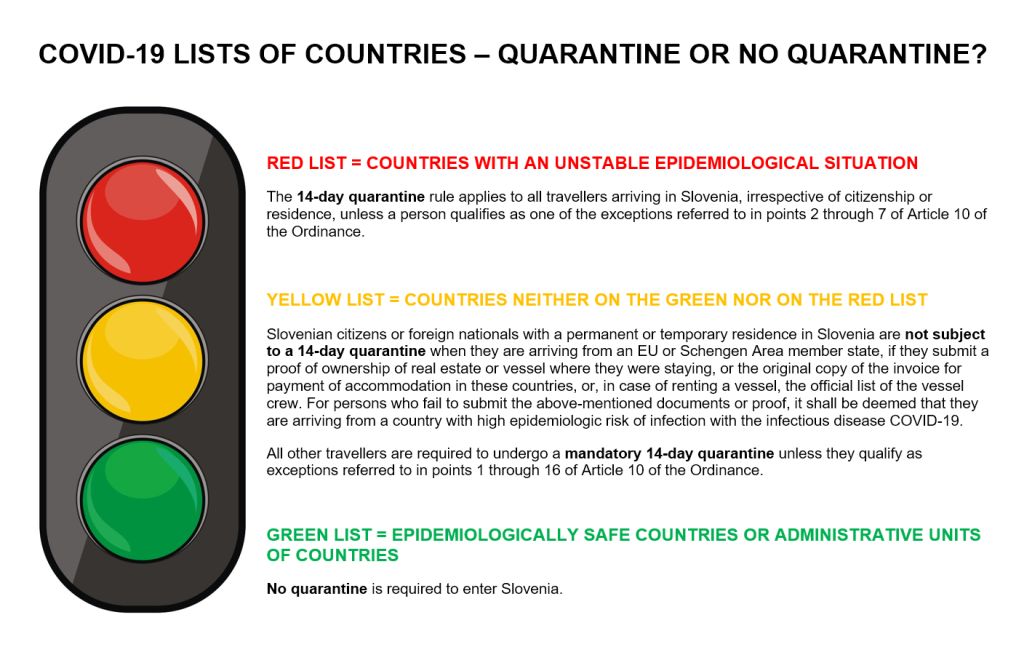
Learn more about the red, yellow and green lists here
Representatives of the ministries of health and public administration favour a completely voluntary use of the app although Health Ministry State Secretary Tina Bregant said it would be desirable for the app to be used by between 60% and 70% of the population, which means virtually everyone with a smart phone.
The opposition parties, except for the National Party (SNS), have raised objections to the plans, while the senior coalition Democratic Party (SDS) says the app is urgent or else Slovenia will be forced to reimpose strict lockdown measures, which PM Janez Janša says is the only alternative until an effective vaccine or medication against Covid-19 is available.
The junior coalition Pensioners' Party (DeSUS) finds the app useful, although it expects "certain issues" to be first cleared up. The fellow coalition party New Slovenia (NSi) is yet to take its position on the matter following today's debate and the Modern Centre Party (SMC) is yet to respond.
The opposition Marjan Šarec List (LMŠ) would like the provisions on the app to be scrapped altogether, because they see it is yet "another attempt to place the population under surveillance under the pretext of concern for public health".
Similarly, the Left believes the invasion of privacy entailed would be simply excessive, while the Social Democrats (SD) and the Alenka Bratušek Party (SAB) underscore the app should be voluntary. What is more, the users should be well informed and data processing transparent and lawful. The SD has also questioned the app's efficiency.
Information Commissioner Mojca Prelesnik has called on the National Assembly not to support provisions that would make the app compulsory because this runs contrary to the EU guidelines which say tracing apps "must be voluntary, transparent, temporary, cybersecure, using temporary and pseudonymised data".
Prelesnik says that only voluntary download can be acceptable under the European law, while the legal framework that would impose mandatory use should meet basic standards of protection of individual's rights, meaning it should be lawful, constitutional, temporary and proportionate with respect to the intended goal.
"Particular attention should be given to the question of mandatory use for individuals under quarantine. Those are not confirmed as infected, of which the app would alert other users, so such mandatory use in advance could be questionable from the aspect of being proportionate and needed."
Among other things, the commissioner is also concerned about the proposed fine for those who violate mandatory use, noting that contact tracing apps function reliably only on the latest models of smart phones, so the coercion for everyone to download it even though it would not function on their device is disproportionate.
The mandatory use of the app would also run against the terms of use of technological solutions developed by Google and Apple, which many countries in Europe have used for such apps.
Slovenia's app is to be modelled on Italy's or Germany's. These are based on application interfaces developed by the two tech giants and are used solely to notify of potential contacts with the infected persons, says Dušan Caf, director of Digital Society Institute Digitas.
Noting that Google and Apple want user privacy protected, including their voluntary decision to upload and use the app, he explains that tracing apps that do not use the two companies' interfaces do not work when in sleep mode. For full functioning, the companies would have to allow access to certain functionalities of mobile devices, which they do not want to do.
All our stories on coronavirus and Slovenia are here
Water mills used to be a common sight in the Slovenian countryside. Inland, the owners of the mills were usually feudal landowners; i.e. the castle mills would mainly grind grain for the needs of the Lord. Smaller craft and peasant mills would on the other hand grind only for their own needs, and in the Littoral the owners of the mills were often townships. To enable milling, the accompanying activity of making millstones was developed.
At the beginning of the 19th century, water mills were still regulated by the 1770 Mill Order, which prescribed sanitary measures and customer protection provisions. The Mill Order paid special attention to the care of millstones. During times with a low water level the miller was obliged to grind first for his customers and only then for himself. It was strictly forbidden for millers to discriminate between individual customers, and charging methods were also prescribed by the Order. Land lordships were in charge of controlling the implementation of the Mill Order.
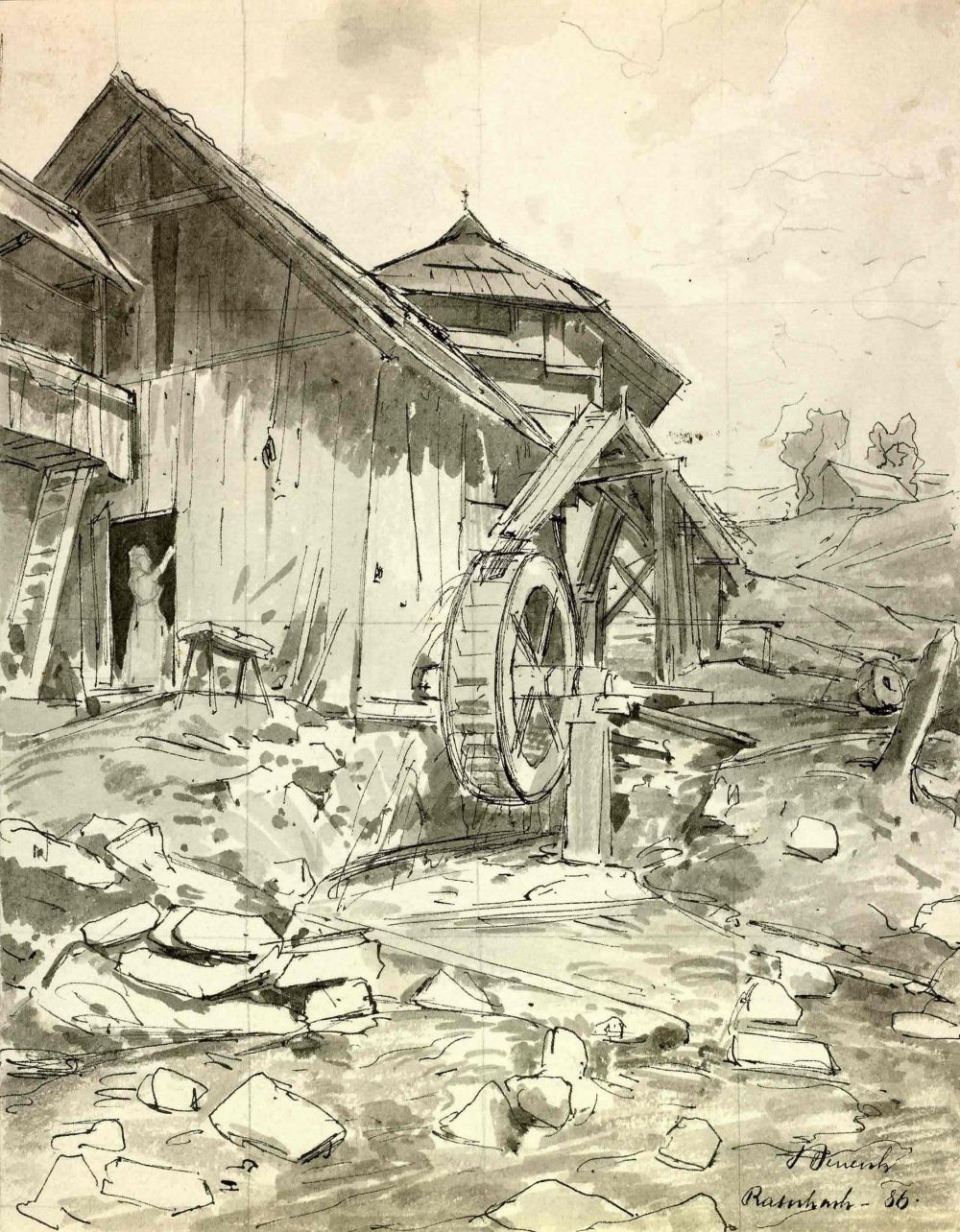
In 1814 new provisions were included into the Mill Order, requiring professional training on the part of the mill owner, and customers were now free to choose the mill where they would grind grain and allowed to be present at the grinding. The miller was obliged to grind the grain of each customer separately, and was not allowed to mix it with other customers’.
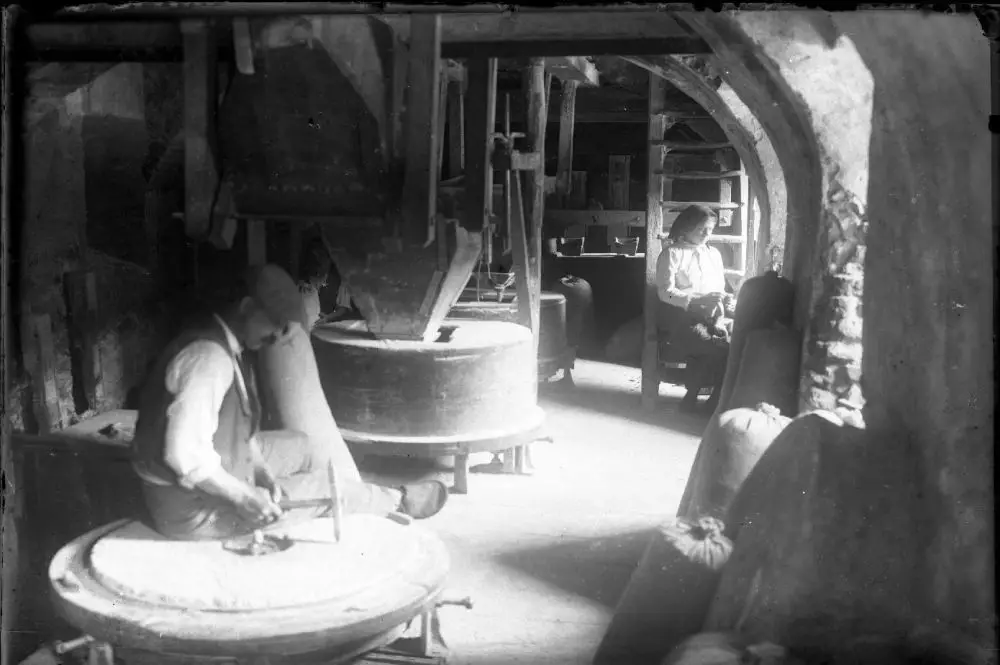
The water-flow energy was also used for log, saws and sometimes both devices were combined in one place.
With the introduction of the steam engine, mills began to move from the riversides to the shore. The first steam engine in Slovenia was set up in Trieste in 1819 by a Frenchman, Sonnerat. Instead of millstones roller mills were used, the capacity of which exceeded the previous methods of grinding several times. Further enlargements of these mills also required new propellants. All this led to the collapse of the old stone mills and water drive systems.
The introduction of roller mills (first in 1850 in Ljubljana, then in Ajdovščina, Domžale, Kranj, Maribor and Središče ob Dravi) marked the beginning of the Slovenian milling industry. In connection with the steam mill plants, several pasta factories emerged in Ljubljana, Maribor and Ilirska Bistrica in the last years of the 19th century, and most notably the Pekatete pasta plant from Bistrica, the brand that survived almost a century before being merged into Zlato polje pastas of Žito.
Although some 1,700 farm mills existed in the end of the 19th century, only a few survived to become part of today’s protected cultural heritage.
The Sava Dolinka and Sava Bohinjka confluence in Lancovo by Radovljica has been a local recreational and fishing spot for as long as people can remember, helping to maintain the high quality of life for the those who live there.
The area is not only a place of great natural beauty, but also an ecologically important one and a spawning ground for indigenous fish.
Now an investor has shown up who is planning to “develop” the spot into a profitable tourist centre. Within the confluence area the investor plans to construct an artificial lake, apartment blocks, catering facility, picnic places, toilets, 62 spaces for caravans and parking lots. The plan also includes multi-purpose playgrounds and recreational facilities.
These plans did not make the locals very happy, so they started a "Save the confluence" petition, whose purpose is to stop the Tourist and Recreation Center Lancovo project, which would deprive the public of access to the natural attractions. The goal of is for concerned citizens to gain the right to participate in the planning of construction projects that will interfere with their living space and thus prevent the destruction of nature, and so protect the quality of life in the area.
To add your name to the petition click here.




